What is crypto burning
- 13 minute read

Burning coins or crypto burning usually means strategically reducing the amount of coins in circulation for a specific purpose, such as generating scarcity of a coin and increasing demand and price. A coin is usually burned by sending it to a special address that has no private key has. Because of this, you can still find out in a block explorer how many total coins have been burned, but all coins in such a wallet can no longer be spent.
Usually, such an address is created specifically to burn coins and is called a burn or eater address. This address can receive coins but not send them, therefore any coin at this address is out of circulation. Several blockchains use this technique. In this article, we explain all about crypto burning.
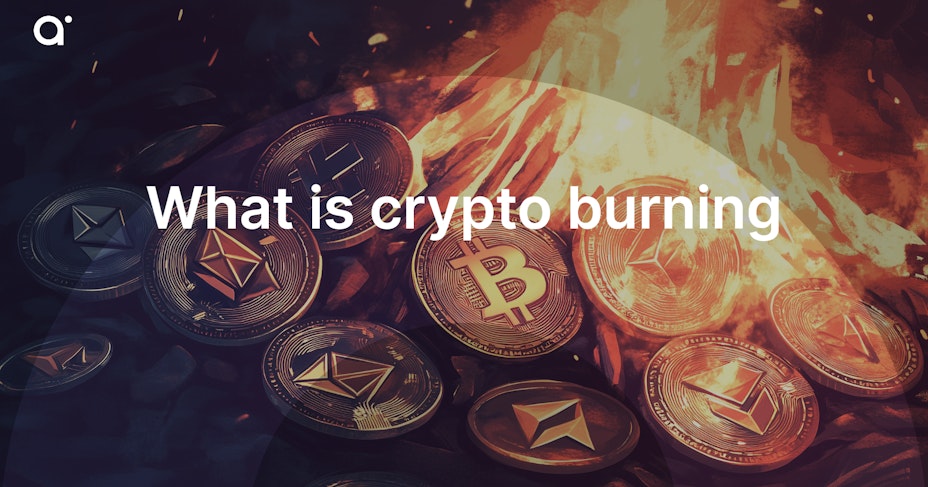
- Usually, coins are burned so that the coins that remain become more valuable, thus making investors more interested in a cryptocurrency
- Stablecoins have no choice but to burn coins to keep the price stable
- Sometimes a hack can be dealt with by burning the stolen coins
- Ethereum, BNB and Tether all burn tokens for different reasons
- Token burning has become a widely used concept in a lot of blockchains
- Proof of Burn is a consensus mechanism, where you burn tokens and hope to get more value back as a result, a rather questionable technique
- The effectiveness of token burning depends on many factors, including especially the market cycle
- Cryptocurrency that burns tokens has a good chance of becoming relatively more valuable than cryptocurrency that does not
- The advantages of crypto burning outweigh the disadvantages
- It is more than likely that any self-respecting blockchain and its investors will eventually turn to burning coins to curb inflation
Inhoudsopgave
- Why are coins being burned?
- Which blockchains are burning coins?
- How does burning coins work?
- What is Proof of Burn?
- The effect of burning coins
- Benefits of burning coins
- Disadvantages of burning coins
- Conclusion
Why are coins being burned?
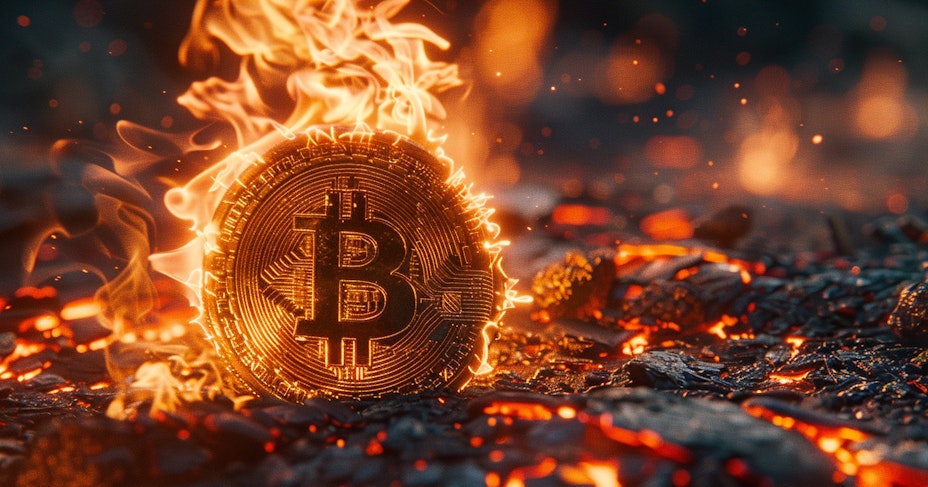
The most obvious reason to burn coins (also called burning) is to reduce the total number so that the remaining coins become more valuable. There are all kinds of cryptocurrencies who do this, from meme coins to coins from the top 10.
If the number of tokens in circulation is reduced, investors will see this as a very positive aspect because most cryptocurrencies are getting more and more coins in circulation. Because a blockchain tokens burns, holders will be more likely to hold a token, which could increase demand and the price.
Marketing of cryptocurrency
With some cryptocurrencies, burning coins is a marketing tool. Often they announce such a thing on social media. Once investors hear that coins of a particular cryptocurrency are being taken out of circulation, they may decide to purchase or hold it, believing it will positively affect the price.
Burning stablecoins
There are also blockchains that burn tokens as a regular part of a transaction. If you have certain stablecoins buys they have a token burn mechanism that keeps the stablecoin price as close as possible to the derived value (e.g., the dollar). To do this, tokens are burned when stablecoins are bought and sold. Some stablecoins do this with an algorithm and a smart contract , but since the demise of Terra Luna, this can be questioned.
Burning stolen coins
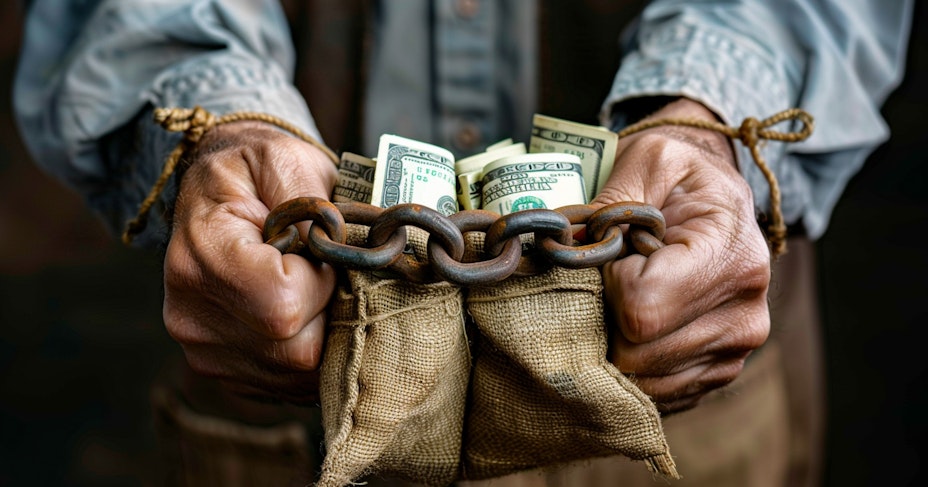
Another story is when a hack occurs and coins are burned. In some cases, the coins that are captured can be frozen and burned so that the hackers can no longer sell them and the price does not suddenly collapse. Often blockchains exchanges alert to such a hack, after which trading and depositing of that coin is temporarily halted until the coins are burned in sufficient quantity.
Proof of Burn strategy
Finally, we will touch on Proof of Burn, about which more later. In this form of consensus coins are burned to keep the blockchain secure, comparable to other consensus protocols like Proof of Stake or Proof of Work .
Which blockchains are burning coins?
There are quite a few of them. We are obviously not going to list them all, but will review important cryptocurrencies or startling combustion mechanisms.
Ethereum EIP-1559
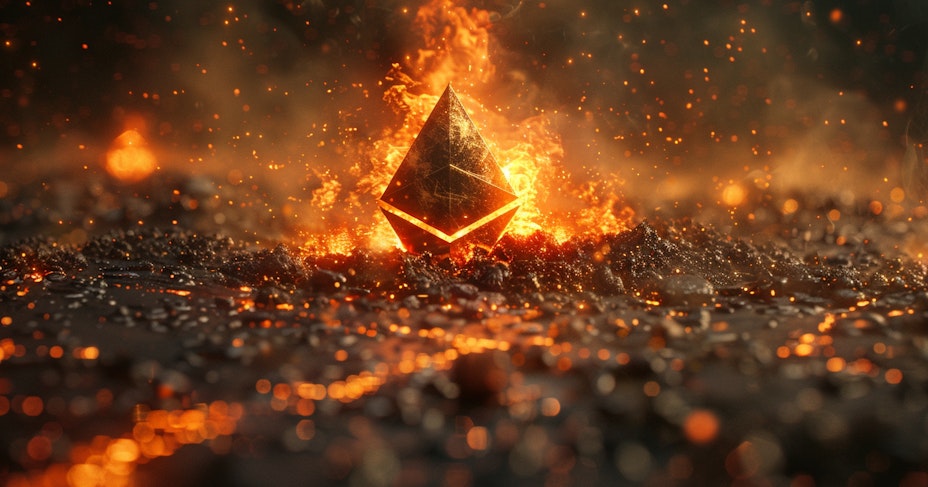
Ethereum is burning tokens as part of their 2021 Ethereum Improvement Proposal EIP-1559. In the process miners paid only for faster transaction processing, but the base fee for a transaction on Ethereum will be burned. This should not only solve all sorts of problems with high transaction fees, but should also make Ethereum a more attractive choice due to far fewer coins being added. In fact, there are times when more coins are burned than are added via Proof of Stake.
BNB token burn program
Binance Coin (BNB) has also had a token burn program for quite some time, which is intended to firmly increase the value of the coin over time. Of the initial 200 million tokens, around 145 million remain. BNB is already a very useful coin, in that you can get 25% off your already low transaction fees of 0.1% maker and taker at Binance, in addition to other use values in the Binance ecosystem. This strategy has worked very well, as the coin's price has exploded and is firmly in the top 5 most popular cryptocurrencies. Binance burns 20% of their profits into BNB tokens every year. Every quarter, they also burst tokens. Eventually, 100 million tokens will remain, at the end of their token burn program.
Tether token burns
Tether, the stablecoin, does need to burn tokens as more Tether comes into circulation, otherwise the stablecoin's price will start to fall and then it is no longer a stablecoin. Of course, the reverse is also true, if less Tether comes into circulation, new ones must be created, otherwise the price will soon have grown above the dollar. Sometimes they also burn huge amounts of tokens, such as burning 3 billion tokens on the Tron blockchain from a Tether Treasury account to stabilize the price. Any stablecoin must logically have such a strategy, otherwise there is no stability at all.
Shiba Inu burning tokens

Shiba Inu is also quite a fan of cremating tokens. Their huge army of doggies could use a reduction if they want to keep the stock price up properly. According to history, Vitalik Buterin pretty much hates this type of dog, as he burned as much as 40% of the total after getting half of the total for free. He must be a cat person. Of course, there were also insane amounts of this token and a few more or less don't even stand out. Additional tokens are regularly burned to keep the price as stable as possible.
"These are the stories the Dogs tell, when the fires burn high and the wind is from the north."
Stellar Lumens halving number of tokens
Stellar Lumens burned 50% of its total stock in 2019, sending its price soaring. Since then, this coin has been in a bit of a slump, but at the time it was a top coin, which got a big price swing upward with this move.
Other token burns
There are often so many of meme coins that some of those that become popular at some point proceed to burn coins, partly to give the community heart and partly to maintain momentum.
Stablecoins burn coins when money is withdrawn. What is taken out must be burned, otherwise the coin is no longer stable and there are too many. It also works the other way around, if tokens are purchased, they must be created for rate stability. Some stablecoins have an algorithm to keep the exchange rate stable, but the Terra case has raised questions about this type of stabilization method, because even a small imperfection in a smart contract can destabilize the entire system.
We can't name all the blockchains doing burning here, but there are quite a few, including among the high listings in CoinGecko.
How does burning coins work?
There are a number of ways to burn coins:
- Send Coins to a special burn address. This can be done either by doing this once, or by sending a portion of the transaction fee from each transaction to that address.
- Algorithms in stablecoins in particular. A special calculation calculates how many coins there are in total and what the rate is and how many coins must be added or burned to maintain the cryptocurrency at the target rate.
- Proof of burn. About which more later.
- Targeted. For a variety of reasons, such as marketing or price appreciation, coins can be burned to reward holders for their investment and belief in the cryptocurrency.
- The burning of coins is also unintentional due to the complexity of crypto. For example, an estimated millions of Bitcoins have been burned, or lost, because they were on old laptops, lost hardware wallets or other wallets that are never opened again due to loss of seed phrases or simply forgot where they stood. This is still going on. All kinds of cryptocurrencies have a lot less in circulation than is listed on CoinGecko. This is just impossible to keep track of so far.
- Hard fork . In doing so, all tokens from the earlier version become unusable and effectively burned.
- In a hack, all the coins that were involved can be burned.
What is Proof of Burn?

The moment you've been waiting for! What is this elusive Proof of Burn anyway? Is it something for pyromaniacs or for people who don't know where to put all their coins? Let's dive into it.
At Proof of Burn, there is also a burn address, to which miners can send cryptocurrency to burn. Burning coins in this way gives miners the chance to be allowed to create the next block and pocket the reward.
Proof of Burn vision
An important aspect of Proof of Burn is that the remaining coins become worth relatively more and there is much less selling pressure, so there is a chance of it becoming a deflationary coin that is worth more and more. This technique especially tries to attract miners who think long-term.
Proof of Burn is a technique that is much less energy intensive than Proof-of-Work. That is one of the reasons for its creation. In Proof-of-Work, an awful lot of energy is put into mining a block by a lot of participants. There can only be one winner, just like in Highlander, and that means an enormous amount of energy is wasted by all the miners who did not win. The energy required for Proof of Burn consists only of sending coins to a burn address, which does not take very much energy.
So you won't see the heavy and expensive equipment to mine Bitcoin, for example, at Proof of Burn. Proof of Burn also tries to distribute the new coins better among miners by giving new coins also to miners who are just starting out, so miners who mine endlessly have less advantage than at Proof of Work.
Doubts about Proof of Burn
Still, there are quite a few doubts about this technique. After all, you can also burn coins from another blockchain in order to mine a new block on a Proof of Burn blockchain. This puts energy efficiency at risk and makes it all rather opaque. The fact that Proof of Burn coins are still so unpopular will certainly have a reason. After all, you have to burn coins of value and just hope you are among the lucky ones, otherwise you just lose value.
Of course, the reason I went a little deeper into this newer and difficult to understand technique has everything to do with the topic of this article. Given the strange principle of burning coins and then hoping to get something in return, it seems to me that there are few people who immediately find this such a cool principle that they all run to the checkout of a Proof of Burn blockchain!
The effect of burning coins
The price of a cryptocurrency depends on so many factors that it is impossible to name a direct influence of burning coins. In general, though, I would venture to say that a cryptocurrency whose coins are burned significantly over time has a chance of rising in price, related to the price of other crypto that does not.
Well, that's pretty cautious! The reason I am so cautious is that the price of a crypto depends on so many factors that a statement about it quickly seems like a bias or a premature conclusion.
Influence of market cycle on burning
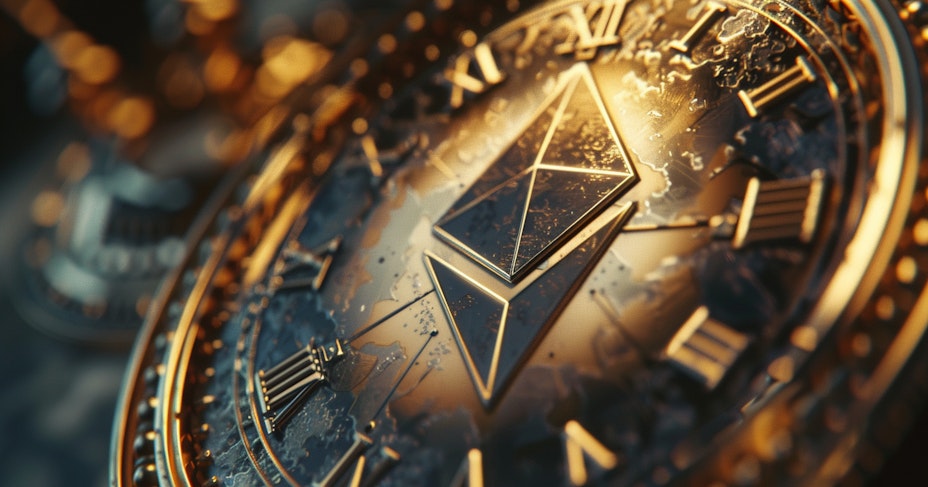
So you can burn coins like you're at a pyromaniac festival, but if there's a bear market is the price will still suffer in most cases. In a bull market all prices go up, so then the effect of mass culling is not even clearly visible anymore. So you could say that the effect of burning coins only becomes visible in the longer term.
Blockchains that burn relative to other blockchains
You can also look at it another way. If you compare blockchains that burn tokens to cryptocurrencies that are never burned and of which there are more and more, it is quite possible that the effects of burning versus dilution (more and more coins in circulation) are increasingly divergent as time marches on.
The amount being burned also counts, of course. Tokens of which more and more are added and some of which are burned, but where the number in circulation still continues to increase have a relatively small impact compared to a burning process where fewer and fewer come into circulation. When burning significant amounts at a given time, such as Stellar Lumens' 50% token burn, this logically has a significant impact on the stock price.
Deflationary cryptocurrency
In general, you can say that coins of which there are fewer and fewer, like Binance Coin, the price impact over time can be very large and make a cryptocurrency very strong relative to the rest. With BNB, this is evident, the price has exploded from a few tens to a few hundred euros. This will be partly due to the ever-shrinking supply and thus deflation, assuming the coin represents significant use value, which is evident with Binance Coin.
The last thing I want to point out here is that you can burn coins all you want, but if no one sees this coin this makes no difference at all. It may temporarily do something to the price, but a cryptocurrency must also have use value, otherwise it will eventually die.
Benefits of burning coins

- Generate scarcity, causing investors to hold the coin and minimizing selling pressure. With prolonged scarcity, the price can go substantially higher.
- Stabilizing the price. Cryptocurrency is often very volatile. You frequently see investors selling even highly listed coins en masse on a "buy the rumour, sell the news" basis. If the price tends to move higher over time due to deflation, these investors may find themselves falling behind the net, having to buy back the coins at a higher price.
- Building trust. If the number of coins does not go up so fast or even decline, there are also fewer investors who will sell it at every turn and there is more chance of long-term investment.
- Showing long-term vision. If the number in circulation keeps rising, it will be an unattractive prospect for many leaders in the crypto world, if he views his cryptocurrency through the eyes of an investor.
Disadvantages of burning coins
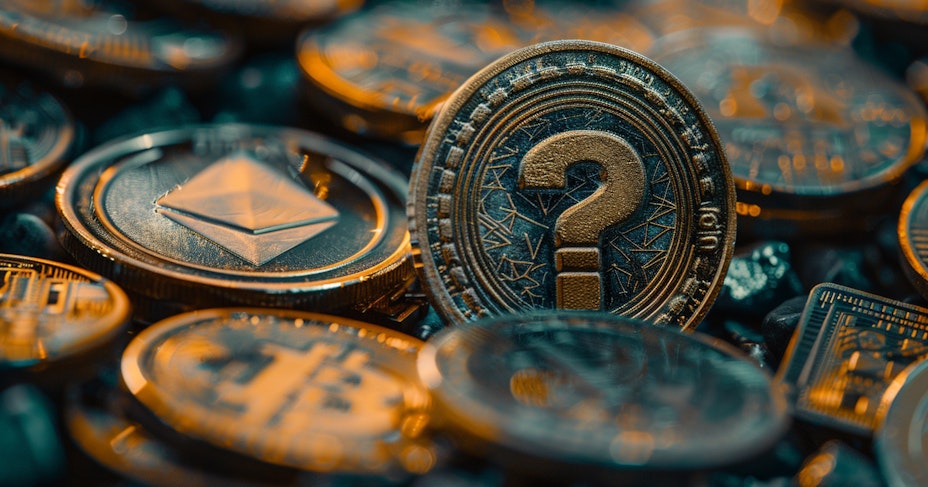
- Pointlessness. Burning coins only begins to have impact when enough are burned to affect the price. If not, it looks more like a cheap trick.
- Complexity. At the Proof of Burn consensus mechanism, many people will raise their eyebrows. Why invent such a complicated process when there are much simpler and transparent protocols?
- Loss of value. Therefore, if you have to burn tokens to get the chance to receive coins, you can also burn coins without getting anything in return.
- Regulation. Burning tokens may be seen as market manipulation and pure marketing and banned in some regions.
Conclusion
Burning coins is starting to become an increasingly frequent way to dampen the number of coins in circulation. Many high-profile cryptocurrencies are already using it to reward their investors for holding coins, thus reducing selling pressure.
You can also use this technique to solve a number of problems, such as burning stolen funds or deploying new protocols.
It is more than likely that any self-respecting blockchain will eventually proceed to burn coins, because otherwise you will disadvantage the holders of your own cryptocurrency due to endless inflation by increasing the number of coins. After all, no one wants to own a coin that becomes worth less and less.


